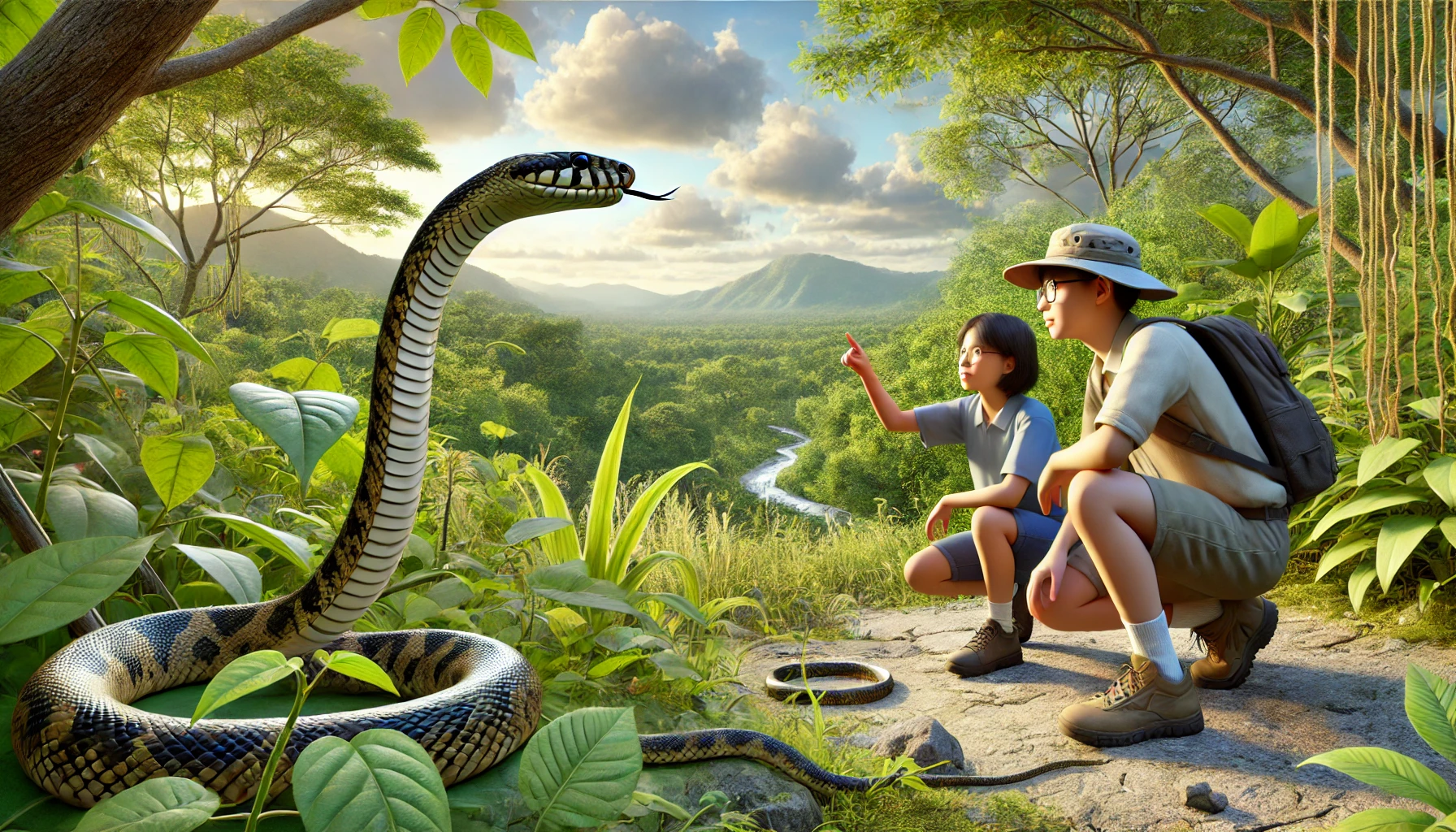
World Snake Day
July 16

World Snake Day, celebrated annually on July 16th, serves as an important occasion to raise awareness about the diverse species of snakes and their critical role in ecosystems. The day encourages education on the often misunderstood nature of snakes and promotes conservation efforts to protect these fascinating reptiles. This awareness day highlights the need to preserve habitat, combat illegal trade, and foster a better understanding among the general public about the ecological benefits snakes offer.
Recognizing the misconceptions and often negative perceptions surrounding snakes, World Snake Day aims to shift public opinion through education and engagement. By dispelling myths and showcasing the beauty and ecological importance of snakes, this day plays a crucial role in snake conservation efforts worldwide.
History and Significance of World Snake Day
The origins of World Snake Day are not well-documented, but the day has gained prominence over the years among conservationists and animal enthusiasts alike. It serves as a pivotal moment to reflect on the ancient and complex relationship between humans and snakes, which has been characterized by fascination and fear. Historically, snakes have been symbols of both good and evil in various cultures, representing medicine and health as well as danger and deceit.
The significance of World Snake Day lies in its ability to educate people about the over 3,000 snake species that inhabit our planet, many of which are critically endangered due to human activities such as habitat destruction, pollution, and wildlife trafficking. This day is a call to action to conserve these creatures, which are vital for controlling pest populations and maintaining healthy ecosystems.
Traditions and Rituals of World Snake Day
Traditionally, World Snake Day has been marked by various activities geared towards education and conservation. Zoos, wildlife centers, and conservation organizations often host lectures, exhibitions, and interactive sessions to educate the public about snake behavior, habitat, and conservation needs. These events are crucial for demystifying snakes and providing people with firsthand experiences that can change perceptions.
In addition to educational programs, many communities engage in habitat clean-ups or participate in social media campaigns aimed at raising awareness about the conservation issues facing snakes. These rituals not only help protect snake habitats but also foster a community spirit of conservation and respect for wildlife.
Modern Celebration of World Snake Day
Today, the celebration of World Snake Day has embraced digital and social media platforms to reach a broader audience. Conservation messages and captivating snake imagery flood platforms like Instagram and Twitter, where hashtags related to snake conservation trend globally. These online celebrations play a significant role in spreading the word and engaging a younger audience who may be pivotal in the future conservation of these creatures.
Furthermore, modern celebrations often include fundraising events to support conservation projects or rescue operations for endangered snake species. These activities highlight the ongoing efforts and the need for continual support to ensure that snakes can be conserved for future generations to enjoy and benefit from.
10 Congratulations and Wishes
- Here’s to celebrating the slithering, sensational world of snakes on World Snake Day! May your day be as fascinating as the many species of snakes!
- Wishing you a hiss-tastic World Snake Day! Let’s shed our fears and learn more about these incredible reptiles.
- May your World Snake Day be filled with intriguing discoveries and newfound respect for these amazing creatures.
- Happy World Snake Day! Let’s make a positive impact by supporting snake conservation efforts worldwide.
- Celebrate the beauty and mystery of snakes this World Snake Day! May awareness and appreciation spread far and wide.
- Wishing you a joyful World Snake Day, filled with learning and love for our legless friends.
- Let’s coil up our resources and protect the snakes! Happy World Snake Day!
- On World Snake Day, let’s charm the world with our advocacy for these misunderstood creatures. Best wishes!
- Happy World Snake Day! Here’s to understanding more and fearing less.
- On this World Snake Day, let’s aim to make a difference in how the world sees snakes and ensure their survival and prosperity.
10 Unusual Facts About Snakes
- Some species of snakes can live for more than 20 years in the wild.
- Snakes can detect a heartbeat in small animals through vibrations in the ground.
- The King Cobra is the longest venomous snake, reaching up to 18 feet in length.
- Snakes do not have eyelids but instead have a transparent scale protecting their eyes.
- The hognose snake can play dead when threatened, flipping over and emitting a foul smell.
- Snakes can help predict earthquakes due to their sensitivity to ground vibrations.
- The majority of snakes are non-venomous and harmless to humans.
- Pythons can swallow prey up to five times their own diameter thanks to their flexible jaws.
- A single anaconda can weigh over 550 pounds, making it one of the heaviest snakes.
- Rattlesnakes renew their rattles each year, adding a new segment each time they shed their skin.
10 Frequently Asked Questions About Snakes
- Are all snakes venomous?
- No, only about 20% of snake species are venomous, and most are not dangerous to humans.
- Can snakes hear?
- Snakes do not have external ears but can sense vibrations through their jawbones, effectively ‘hearing’ through the ground.
- How do snakes move?
- Snakes move using several different locomotion methods, including lateral undulation, sidewinding, concertina movement, and rectilinear progression.
- What do snakes eat?
- Most snakes are carnivorous and eat prey such as rodents, birds, frogs, and other smaller animals, depending on the size and species of the snake.
- How do snakes hunt?
- Snakes use a variety of hunting techniques, including ambush predation, active hunting, and the use of venom to immobilize or kill their prey.
- Can snakes be pets?
- Yes, many species of snakes can be kept as pets, but they require specific care, including proper habitat, temperature, and diet.
- What is the most dangerous snake?
- The title of ‘most dangerous’ can vary depending on the criteria, but the saw-scaled viper is responsible for more human deaths in its range than any other venomous snake.
- How do snakes reproduce?
- Snakes can reproduce through oviparity (laying eggs), ovoviviparity (producing eggs that hatch within the mother), or viviparity (giving birth to live young).
- Do snakes have bones?
- Yes, snakes have several hundred vertebrae and thousands of rib bones, contributing to their flexibility.
- What is the largest snake species?
- The green anaconda is considered the largest snake species by weight, while the reticulated python is the longest.
Conclusion: The Importance of World Snake Day
World Snake Day plays a crucial role in changing attitudes and fostering a deeper appreciation for snakes. By celebrating this day, we contribute to the global efforts to protect and conserve these remarkable creatures. The educational and conservation activities associated with World Snake Day have a lasting impact, ensuring that snakes continue to thrive in their natural habitats.
This day also serves as a reminder of the interconnectedness of all life forms and the importance of biodiversity. By protecting snakes, we uphold the health of ecosystems that are essential for our own survival. Let us continue to advocate for these extraordinary reptiles and ensure that they are appreciated and respected for generations to come.
Why This Day is Important
World Snake Day is not just about celebrating snakes but also about promoting ecological balance and conservation. Snakes play a critical role in controlling pest populations and maintaining the health of ecosystems, which in turn supports agriculture and reduces disease outbreaks among humans. By understanding and protecting snakes, we protect our environment and ourselves.
Author’s Opinion
Celebrating World Snake Day is a powerful statement of our commitment to biodiversity and ecological health. It’s a day to challenge our fears and misconceptions and to embrace the role of snakes as fascinating and vital parts of our natural world. Through education and conservation, we can ensure that snakes continue to play their critical role in ecological systems.




